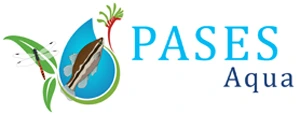PASES Aqua supplies the most vibrant blue crayfish locally, interstate and overseas.
Blue Yabby (Cherax destructor) Water quality requirements of blue yabbies:
Temperature: Yabbies are adapted to a higher temperature range than marron and thrive in the warmer, drier inland regions. Yabbies do not grow at winter water temperatures below 15 ̊C and grow best at 28 ̊C. Growth ceases over 34 ̊C.
Dissolved Oxygen: Yabbies are hardier and more resilient to stagnant water conditions than marron. They have been reported to survive in dissolved oxygen levels lower than one part per million (ppm). However, we highly recommend aeration in residential aquariums.
pH: Yabbies enjoy a neutral pH of 7.0 (6.8-7.2 is the ideal pH range) but can tolerate pH of 6.2 to 8.2.
Salinity: Growth of yabbies ceases at salinities above 8ppt, equal to about one quarter the concentration of seawater. Although yabbies tolerate higher salinities, they become stressed at salinities over one-third seawater (11ppt), with mortalities occurring at levels above about half seawater (17ppt).
Growth: Yabbies can reach a maximum size of 320g, these large yabbies are males. Females are greatly suppressed in growth by the diversion of food energy into spawning. As size increases, yabby claws increase relatively more in size than the rest of the body and they are massive in large males over 100g.
Sexual Maturity: Female yabbies are sexually mature at a very small size and early age; at 20 g and less than one year old. Yabbies typically produce from 30 to 450 eggs per brood, although an average spawning is 350 eggs (Merrick & Lambert 1991) larger females generally produce more juveniles. The eggs hatch on the female and the juveniles are carried until they reach an advanced stage of development and detach themselves. Eggs are incubated under the tail of the female yabby and take between 19 and 40 days to hatch, depending on water temperature. (Morrissy et al. 1990). After the young leave the female, she is capable of spawning again immediately if environmental conditions are suitable (Mills 1983).
Diet: Yabbies, like most crayfish, are detritus feeders. Consequently, while supplementary feeding is essential for higher than natural crayfish production, crayfish make up for the deficiencies of essential micronutrients in the artificial feed by also eating natural food in the pond.
Shelter: Yabbies are vulnerable to attacks when shedding/moulting or berried (with eggs) so provide adequate shelter when stocking multiple yabbies in the same culture vessel to provide protection.
- Yabbies can be great at escaping so a cover or lid should be placed to discourage them from climbing out.
- If using tap water for water changes, chlorine neutralizer must be used at a triple dose to remove the chlorine and chloramines, as the chlorine and chloramines will burn the yabbies.
- If outside WA please check local regulations on keeping this species.
Frequently asked questions
PASES Aqua has a retail store located in Cockburn Central WA where yabbies are stocked in year round we provide shipping in Australia via airport to airport where minimum orders apply.
Cost varies on colour and size. electric blue yabbies are much more costly than browns. Bulk buy discounts can be applied.
No, we currently do not sell any brown yabbies.
Electric blue yabbies are born blue and are still the same species as brown yabbies. Originally bred from a rare genetic mutation two adult blue yabbies bred together will now always produce blue babies.
Short answer yes. Blue yabbies taste the same as browns although are not commonly sold for eating purposes due to cost compared to browns.
There is always a risk involved keeping yabbies with fish. If they can catch them they will eat them. Best keep with fast moving fish and deep enough ponds so the fish can avoid the bottom.
Related services
We have the drive, the passion, and the knowledge to help you. We employ the right people with a strong background in fish, and/or qualifications in Biology or Aquaculture and/or related fields



